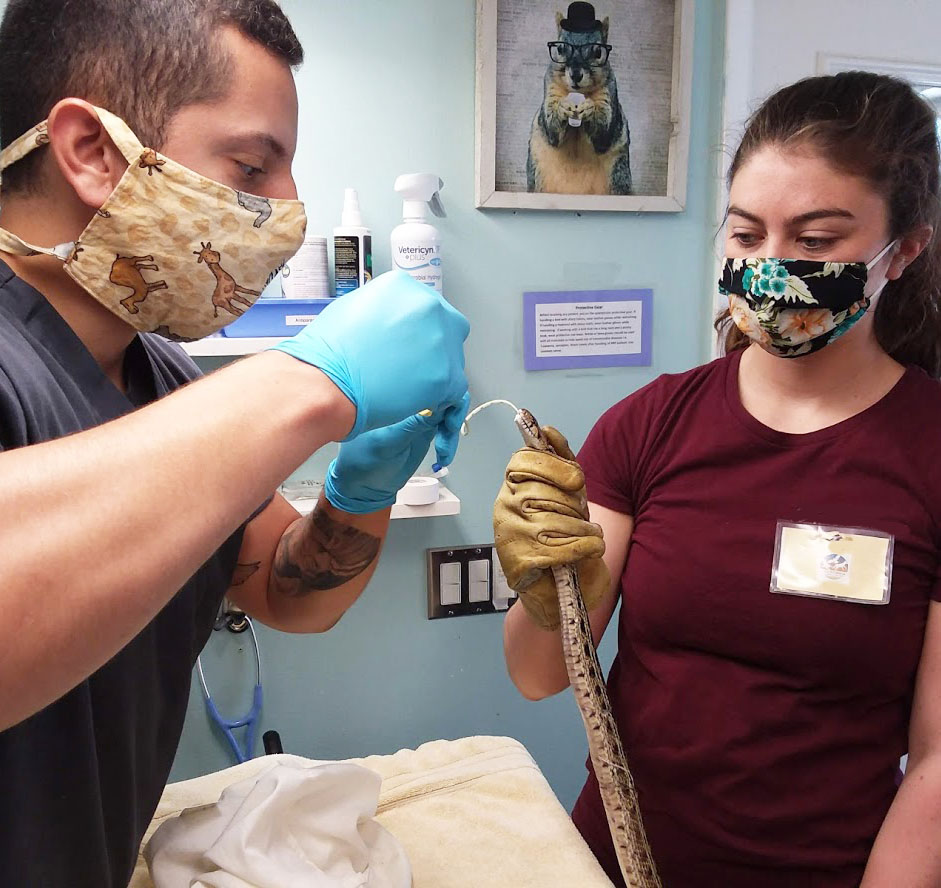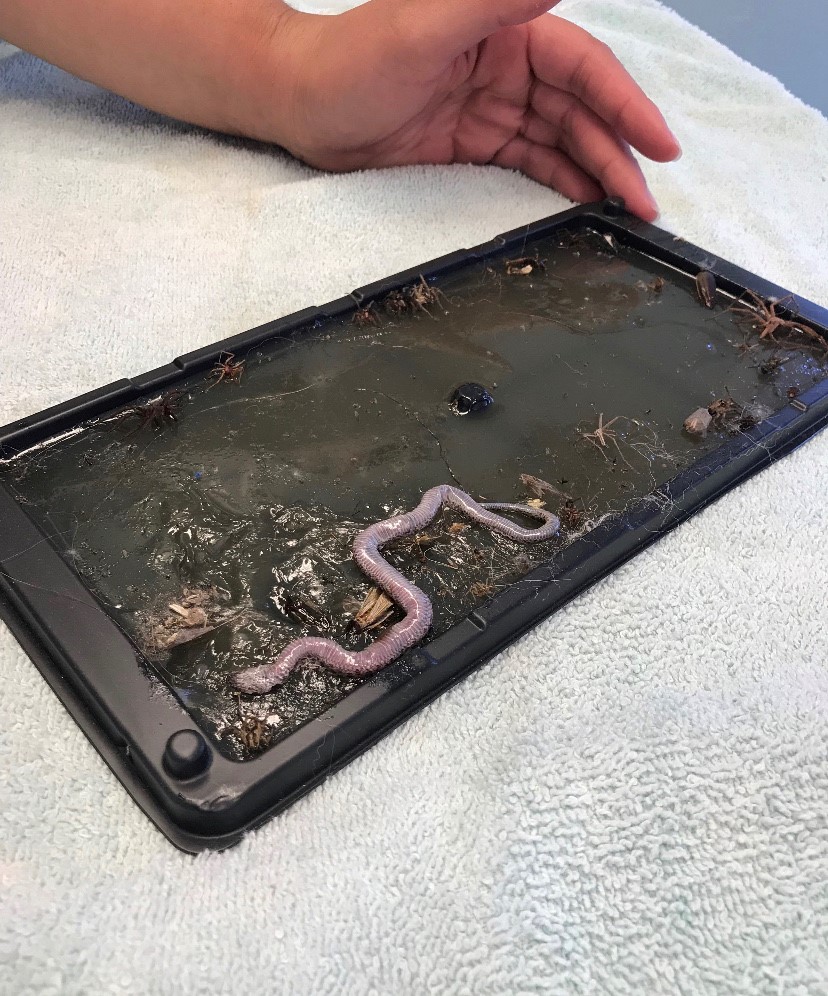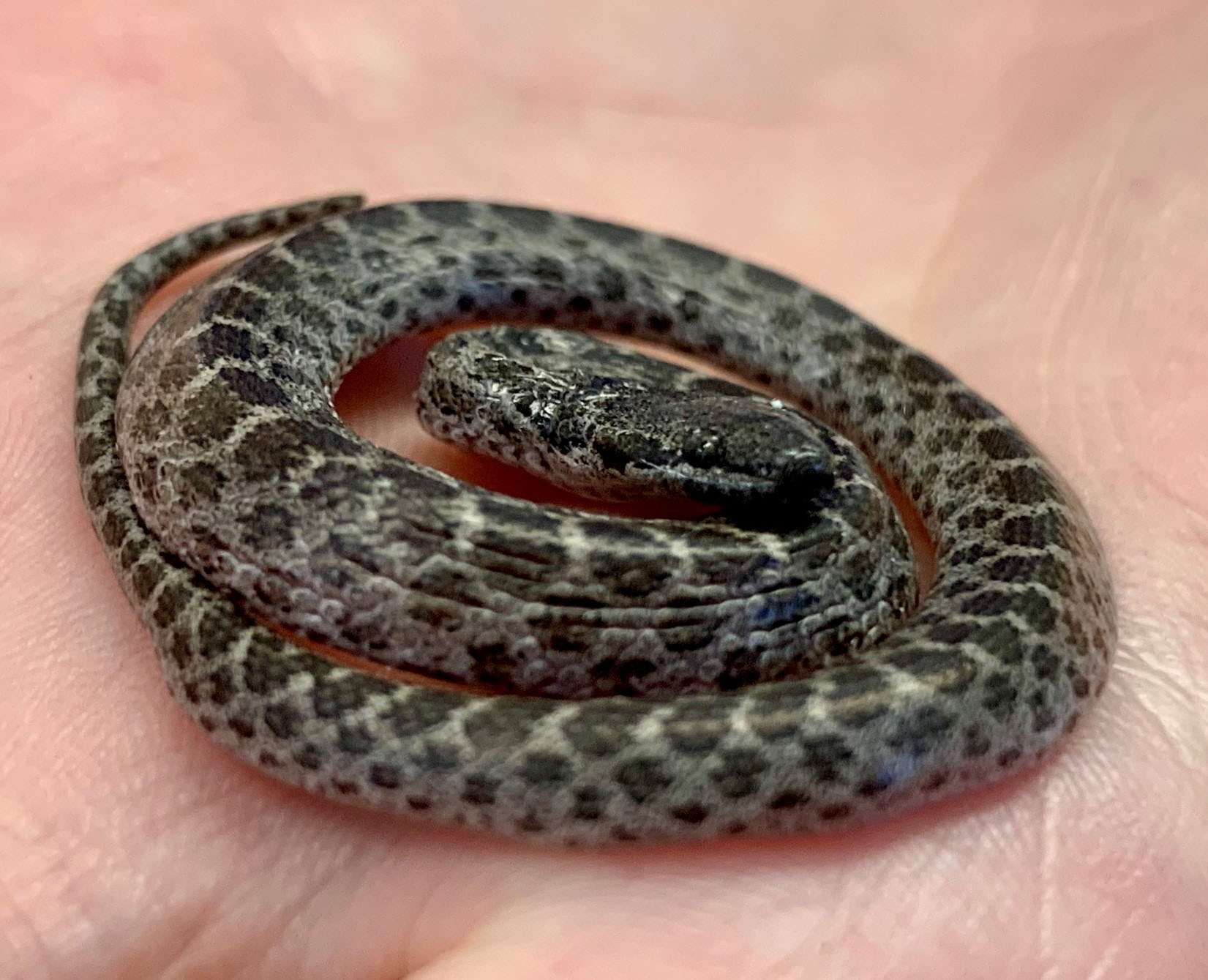Snakes, Friend or Foe?
By Jennifer Guess, Senior Wildlife Technician Supervisor

A Gopher Snake who had been caught in netting being tube fed
Photo by Heather Patrice Brown
On an average year California Wildlife Center sees up to 150 different species come through our doors. Although most patients are avian and mammalian, we also see a fair share of reptiles. Over the years CWC has admitted eight different species of snakes alone.
Snakes come to CWC for a variety of reasons. Some are caught in garden netting. This usually causes constriction wounds, lacerations, swelling, abrasions, and in the worst cases, death. Others are caught in glue traps, which can cause emaciation, dehydration, and abrasions (and death, unless we remove them). Glue trap snakes usually have a good prognosis if brought to CWC early enough. Some snakes are hit by cars, which can cause severe trauma to various parts of the face/body, and most of the time are fatal. Unfortunately, we also see snakes that have been intentionally harmed by the public, usually out of misplaced fear.
Snakes in the Southern California area do not eat anything bigger than a ground squirrel. Because of this, snakes would rather retreat from confrontation but will become defensive if threatened. The vast majority of snake bites in humans occur because a person tries to capture or kill a snake. When left alone snakes present little to no danger to people.
Snakes are a very important part of the ecosystem. They are both predator and prey. Snakes help keep rodent populations in check. Without predators, rodent populations (and the diseases they can carry) quickly get out of control. Snakes are also an important food source for many large raptors, some mammals, and even other snakes. In fact, the California Kingsnake has a natural immunity to rattlesnake venom, and they are known to kill and eat rattlesnakes.

A San Diego Night Snake caught in glue trap
Photo by Jenn Guess
Knowing a little bit about snake habits and habitats can help everyone coexist peacefully. Snakes tend to hibernate in dens over winter. They will venture out in spring when the daytime temperatures reach about 60 degrees Fahrenheit or higher. In the early spring snakes will be active at any time of the day. Snakes do not like temperatures over 90 degrees Fahrenheit, so during the summer snakes will come out in the cooler hours of dawn and dusk, and sometimes at night.

The same Night Snake after being removed from the glue trap
Photo by Jenn Guess
Snakes like to wait out the hot hours of the day by finding cool, dark places to hide. Piles of cinder blocks, plastics, wood, branch clippings, overgrown vegetation, etc. provide the perfect shelter for snakes. Keeping your yard free of clutter and debris will help deter them from staying on your property. Piles of debris also attract rodents. If you have a rodent population around your house, then you will also attract snakes. Never use poison to try to control rodent populations. Poisons may kill some rodents, but it unfortunately kills off the predators that keep rodent populations under control.
Since snakes are a natural part of the Southern California ecosystem, there is a chance that you will cross paths with one. If you see a snake slithering through your property, bring pets inside and leave the area for an hour. There is a good possibility that the snake is just passing through. Always be careful when lifting up objects that are left outside unattended. Although the vast majority of snake species in Southern California are harmless, it is always better to err on the side of caution when dealing with snakes. Give them a wide berth, and they will do the same for you.
